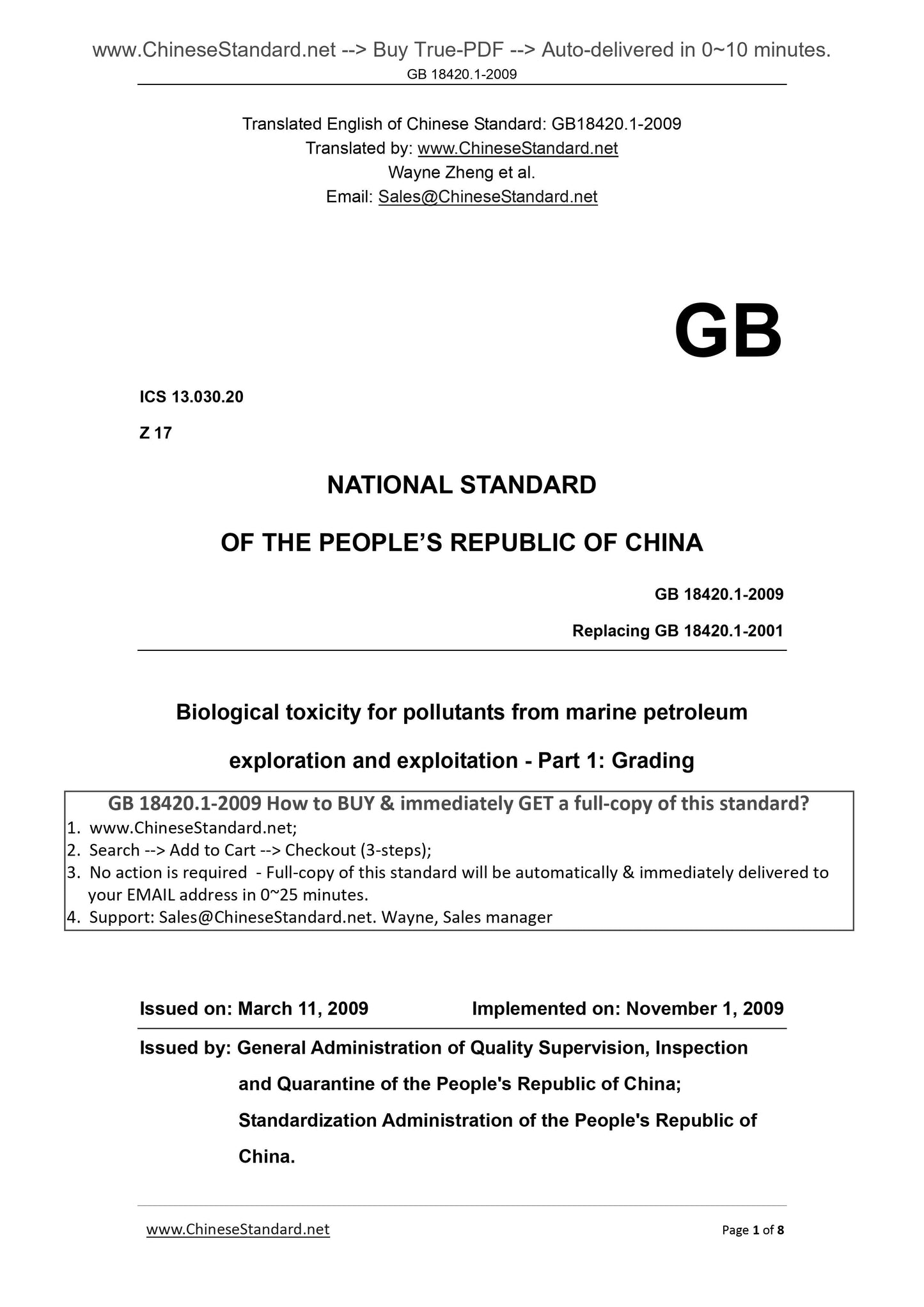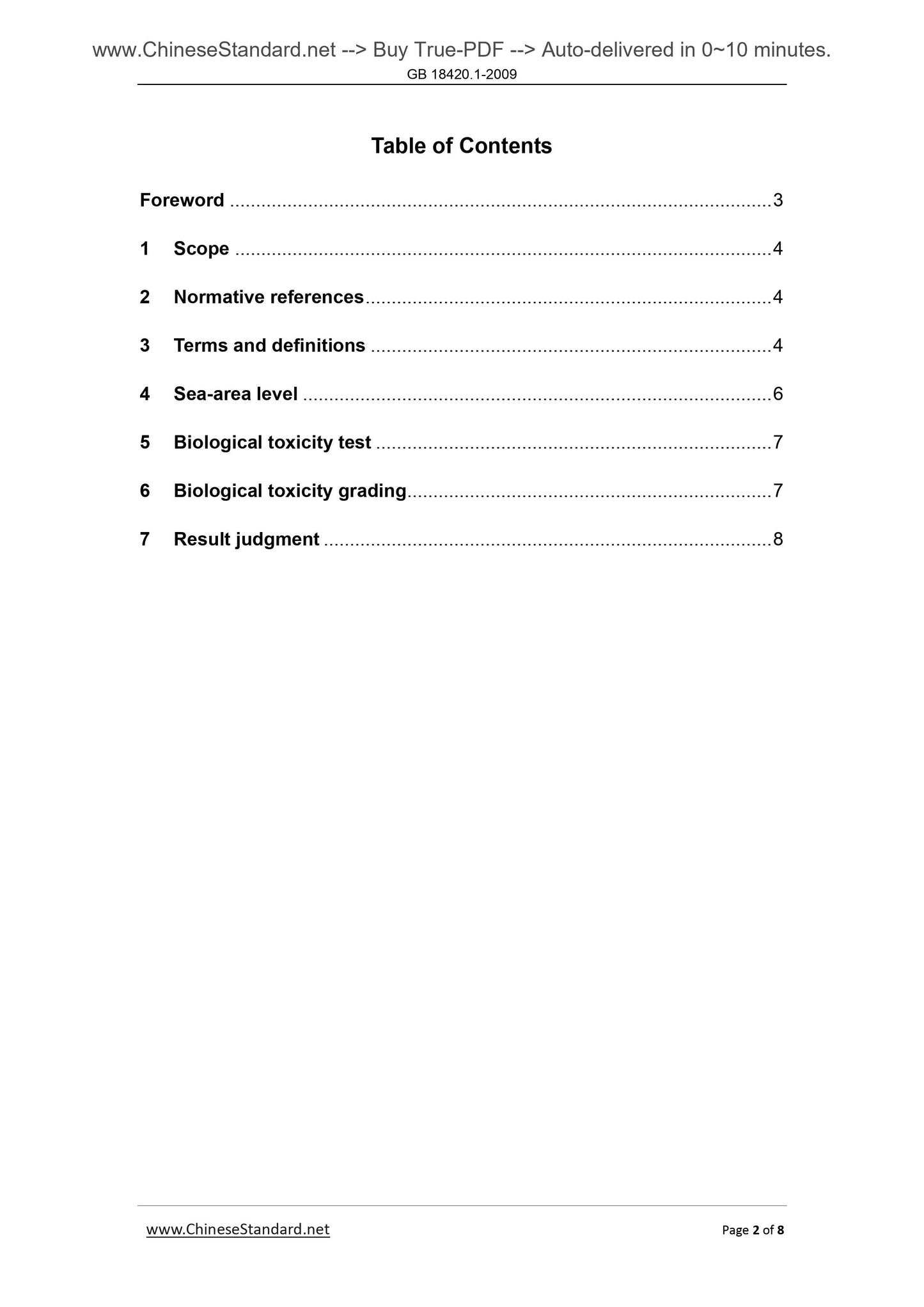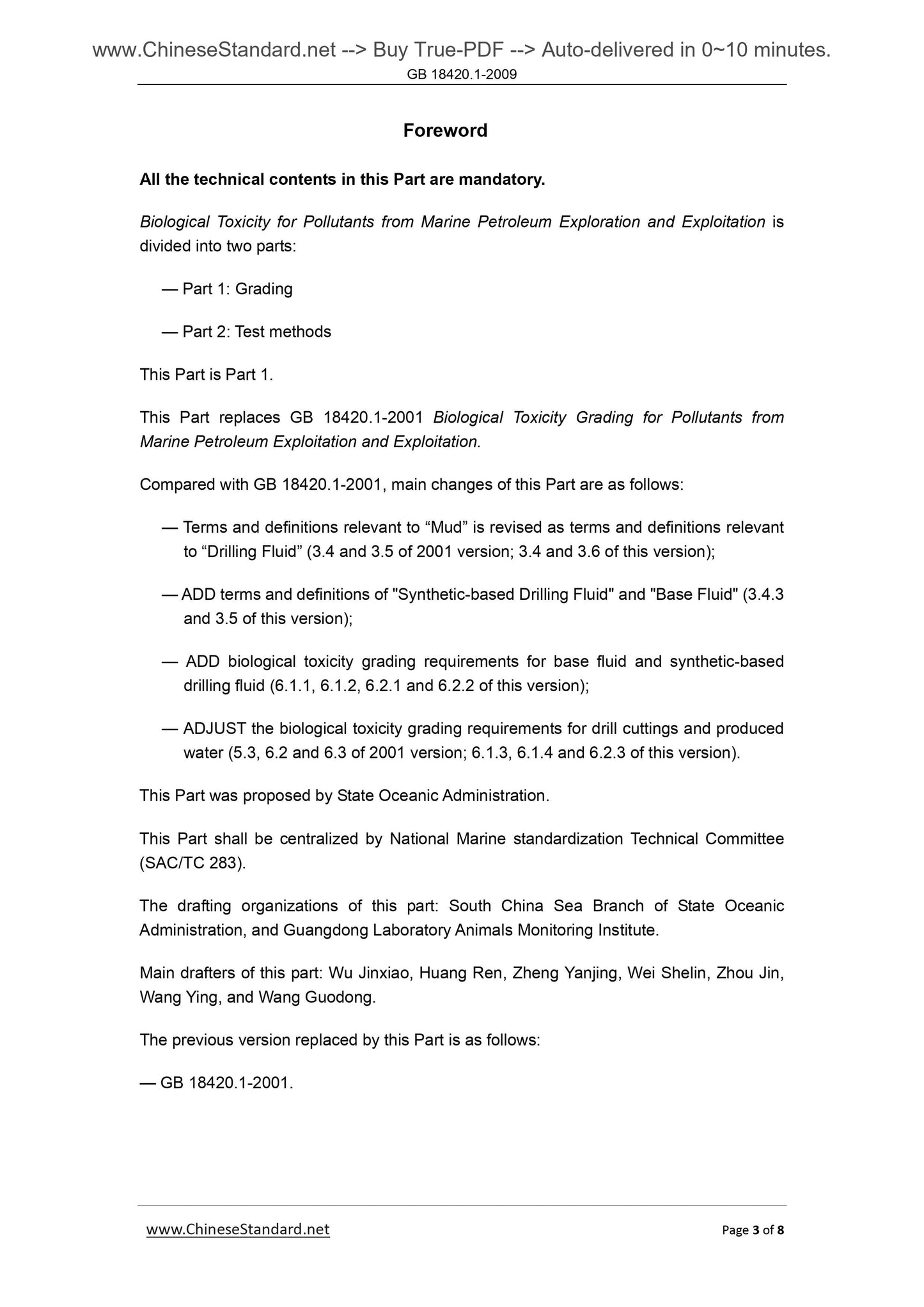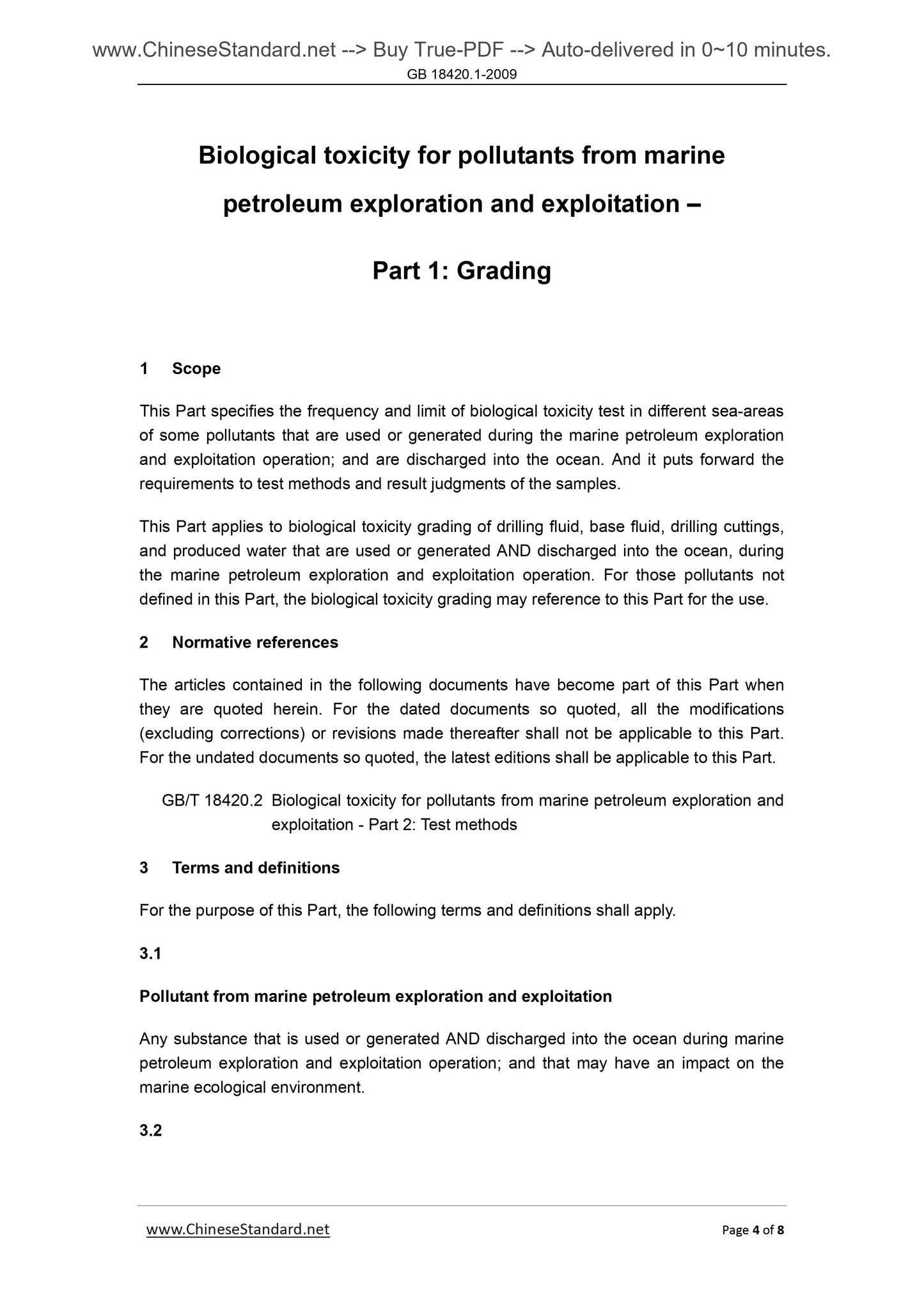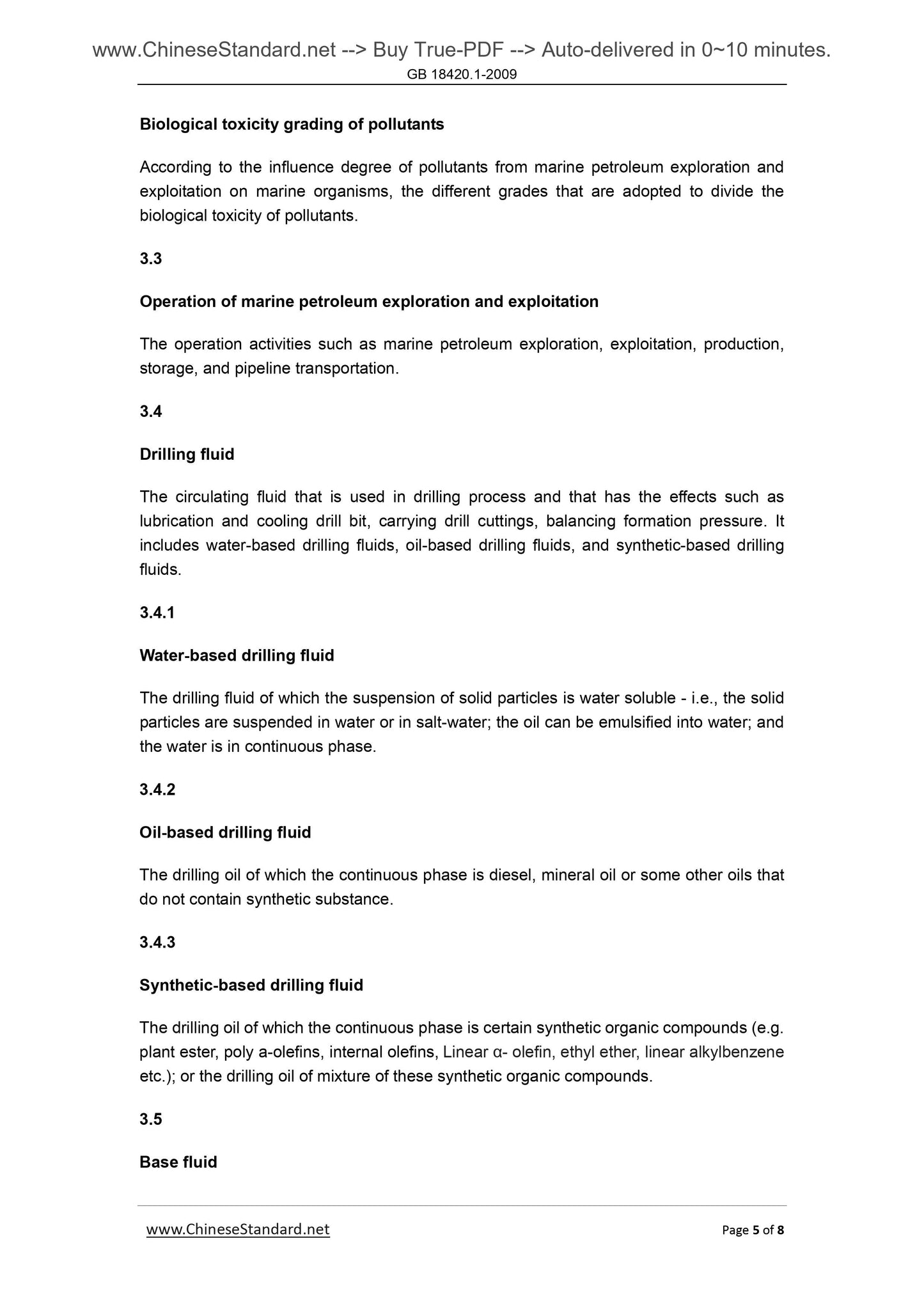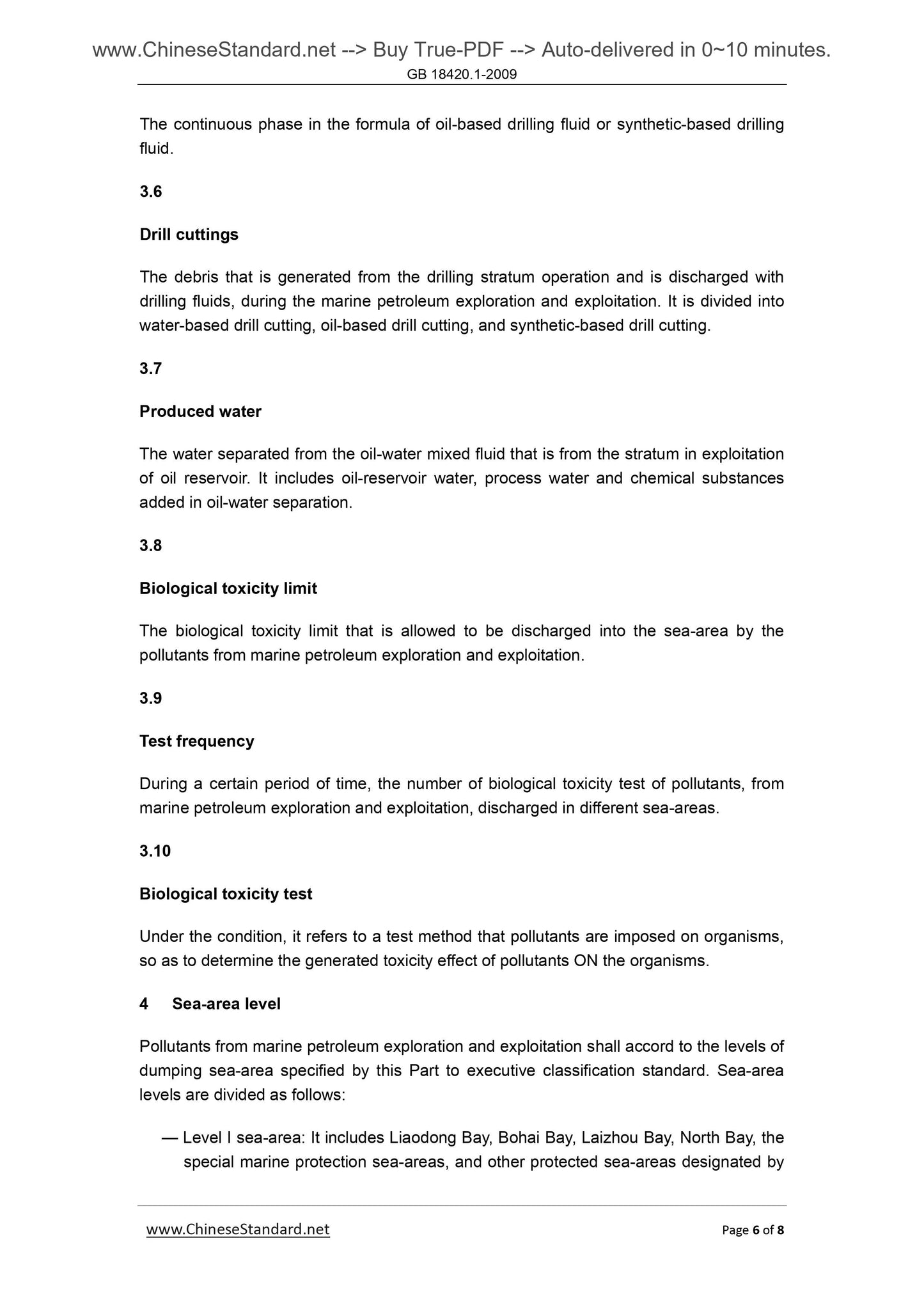1
/
of
6
www.ChineseStandard.us -- Field Test Asia Pte. Ltd.
GB 18420.1-2009 English PDF
GB 18420.1-2009 English PDF
Regular price
$70.00
Regular price
Sale price
$70.00
Unit price
/
per
Shipping calculated at checkout.
Couldn't load pickup availability
GB 18420.1-2009: Biological toxicity for pollutants from marine petroleum exploration and exploitation -- Part 1: Grading
Delivery: 9 seconds. Download (and Email) true-PDF + Invoice.Get Quotation: Click GB 18420.1-2009 (Self-service in 1-minute)
Newer / historical versions: GB 18420.1-2009
Preview True-PDF
Scope
This Part specifies the frequency and limit of biological toxicity test in different sea-areasof some pollutants that are used or generated during the marine petroleum exploration
and exploitation operation; and are discharged into the ocean. And it puts forward the
requirements to test methods and result judgments of the samples.
This Part applies to biological toxicity grading of drilling fluid, base fluid, drilling cuttings,
and produced water that are used or generated AND discharged into the ocean, during
the marine petroleum exploration and exploitation operation. For those pollutants not
defined in this Part, the biological toxicity grading may reference to this Part for the use.
Basic Data
| Standard ID | GB 18420.1-2009 (GB18420.1-2009) |
| Description (Translated English) | Biological toxicity for pollutants from marine petroleum exploration and exploitation -- Part 1: Grading |
| Sector / Industry | National Standard |
| Classification of Chinese Standard | Z17 |
| Classification of International Standard | 13.030.20 |
| Word Count Estimation | 6,691 |
| Date of Issue | 2009-03-11 |
| Date of Implementation | 2009-11-01 |
| Older Standard (superseded by this standard) | GB 18420.1-2001 |
| Quoted Standard | GB/T 18420.2 |
| Regulation (derived from) | Announcement of Newly Approved National Standards No. 2 of 2009 (total 142) |
| Issuing agency(ies) | General Administration of Quality Supervision, Inspection and Quarantine of the People's Republic of China, Standardization Administration of the People's Republic of China |
| Summary | This Chinese standard provides offshore oil exploration and development operations and after use or generate some pollutants discharged into the ocean waters in different biological toxicity testing frequency and allowable values ??, and sample test methods, results, and so forth requirements determination. This standard applies to offshore oil exploration and development operations used or generated and discharged to the ocean after drilling, base fluid, drill cuttings and produced water toxicity grading, the partially qualified outside pollutants refer to the use of biological toxicity grading. |
Share
